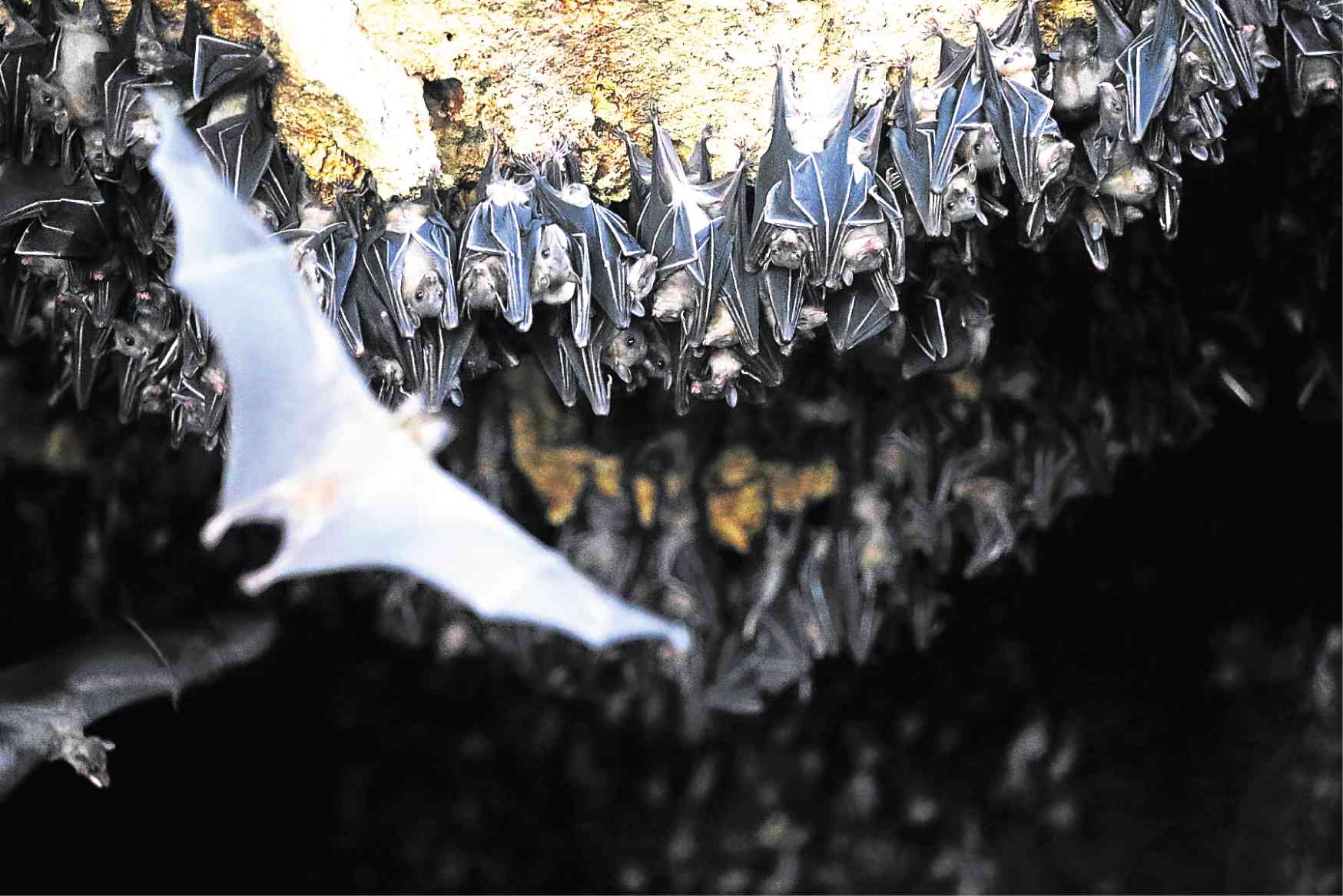Samal Island reaps rewards of conservation: 2.5M bats!

THRIVING COLONY Geoffrey’s rousette fruit bats hang on the walls of the Monfort Bat Cave on Samal Island. EDWIN BACASMAS
ISLAND GARDEN CITY OF SAMAL, DAVAO DEL NORTE, Philippines — Picture this: 750 fruit bats packed in every square meter of a five-chamber cave.
That’s how dense the population of Geoffrey’s rousette fruit bats is inside Monfort Bat Cave on Samal Island has become. The bats in the cave are now estimated to number 2.5 million, up from about 1.8 million a decade ago, the Inquirer has learned.
You might not be able to wrap your head around the sheer number of bats in one setting but you have a chance to see them.
The fruit bats have become one of the top tourist attractions on the island, which is only about 10 minutes by boat from Davao City. The bat sanctuary sits on a 24-hectare property owned by the Monfort family in Barangay Tambo.
To avoid disturbing the bats, the cave’s chambers are strictly off-limits to the public, said Bryan Quirao, a tour guide at the sanctuary.
Article continues after this advertisementGuinness record
Article continues after this advertisementOne can see the bats from a distance but adults need to pay P120 and P60 for children 4 to 15 years old. It is open daily from 8 a.m. to 5 p.m. Night viewing is allowed on request.
Proceeds go to the maintenance of the bat sanctuary.
In 2010, the Guinness World Record officially recognized the Monfort Bat Cave as the largest fruit bat colony in the world.
Norma Monfort, founder and president of the Monfort Bat Cave and Conservation Foundation, has vowed to continue conserving the bat colony, citing its important role in the ecosystem and “economic contribution” to the island.
Known as the “Bat Mama” for her bat conservation work, Monfort said fruit bats were key pollinators and should be conserved for helping in the propagation of fruit-bearing trees in the region.
Quirao, who has been a tour guide at the sanctuary for two years, placed the current bat population at 2.5 million.
Based on thermal photographs, he said, there were 750 Geoffrey’s rousette fruit bats (Rousettus amplexicaudatus) per square meter of the five-chamber cave.
Punishment for poachers
He attributed the healthy bat population to the conservation measures adopted not only by the owner but also by the area’s local government and environment groups.
“If you are caught catching or killing bats on the island, you can be punished,” Quirao said.
Three years ago, Monfort bared plans to build an artificial cave to house the growing number of bats.
She recalled that in 2006, scientists Merlin Tuttle and David Waldien, both of the US-based Bat Conservation International, conducted a study on the bats at the 76-meter limestone cave and placed the population of the winged wonders at 1.8 million.
Critical role
The scientists recommended the conservation of the bats at the Monfort cave due to their critical role in the pollination of high-value fruits, such as durian and wild banana in the Davao region, Monfort said.
The scientists also surveyed over 70 other caves on Samal Island known to be bat shelters and found evidence of serious human disturbance, she said.
The fruit bats are edible and their waste, called guano, is a potent organic fertilizer.
Geoffrey’s rousettes have brown or gray-brown bodies and measure up to 87 millimeters, or 3.5 inches.
The Monfort Bat Cave is believed to be the only remaining major roost site for bats that is protected on the island, Monfort said.
Apart from humans, Quirao said threats to the fruit bat population include eagles, snakes, monitor lizards and rats.
Geoffrey’s rousettes have a life span of 30 to 40 years “as they eat only fruits and no meat,” he said.